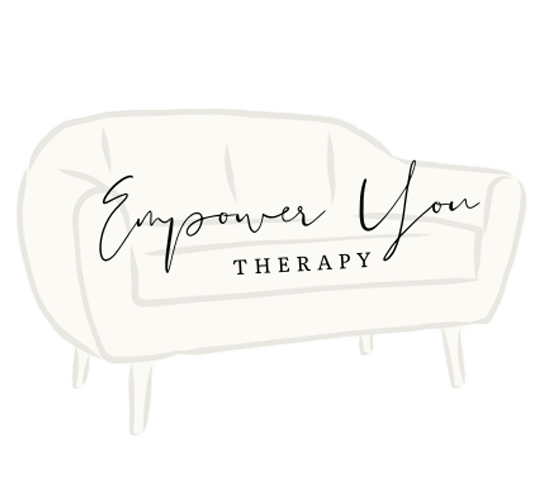Understanding Accelerated Resolution Therapy in Utah: A New Path to Healing
Key takeaways from this post:
- Accelerated Resolution Therapy (ART) is a relatively new approach that combines traditional talk therapy with rapid emotional processing techniques, making it a unique option for trauma healing.
- Unlike more traditional therapies, ART focuses on quickly addressing distressing memories through a sensation-based approach by using bilateral stimulation—often through guided eye movements or tactile sensations like handheld buzzers.
- During ART sessions, clients learn to replace negative images associated with trauma with positive ones, fostering a more optimistic and empowering perspective.
- This therapy process emphasizes a flexible and client-centered approach, allowing individuals to engage with their traumatic memories in a way that feels safe and manageable without following a rigid structure.
- Many clients report experiencing significant relief and noticeable changes in their emotional state in just a few sessions of ART, often feeling lighter and more empowered as a result.
If you’re feeling mentally claustrophobic by trauma, anxiety, or those distressing memories that just won’t fade, you might want to check out participating in accelerated resolution therapy in Utah. This approach is all about helping you process and heal from painful experiences in a gentle but effective way. It’s designed to bring you some relief and get you back on track, so let’s dive into what this therapy is all about and how it could help you.
What is Accelerated Resolution Therapy?
So, what exactly is accelerated resolution therapy (ART)? Think of it as an innovative way to tackle trauma that’s relatively new on the scene. It blends traditional talk therapy with techniques that actually speed up emotional healing. Unlike more conventional methods, you might find that participating in accelerated resolution therapy in Utah can lead to noticeable changes in just a few sessions. Sounds pretty promising, right?
How Does It Work?
Here’s how it usually goes down in a session: you’ll be focusing on a painful memory while engaging in something called bilateral stimulation, which is alternating eye movements or other types of stimuli such as holding handheld buzzers that alternate back and forth. This technique helps your brain process the memories more effectively by activating both sides of the brain, making their emotional impact lighter and less intense. Activating both hemispheres of the brain facilitates communication between them. This process is believed to enhance the brain’s natural processing abilities, allowing for the integration of traumatic memories into a cohesive narrative. The rhythmic stimulation can engage the brain’s adaptive information processing system, helping to move distressing memories from their active, emotional state in the limbic system to a more manageable state in the neocortex, where logical reasoning and context can be applied. This shift not only reduces the emotional intensity of the memories but also helps to create new associations that contribute to meaningful healing. It’s like giving your emotional baggage a thorough spring cleaning!
Your therapist will be there to guide you, helping you pinpoint exactly what hurts and empowering you to let go of that emotional weight by using certain sensation-based prompts to help decrease your distress. By the end of the session, many clients say they feel a sense of relief and can approach their memories with a healthier mindset.
How ART Differs from EMDR
While both Accelerated Resolution Therapy (ART) and Eye Movement Desensitization and Reprocessing (EMDR) are proven to be effective therapeutic approaches for processing trauma, they differ in their techniques and focus. EMDR is more cognitive-based, primarily using bilateral stimulation as you revisit traumatic memories within a structured framework. This method emphasizes processing the emotional pain associated with those memories and follows 8 specific phases to guide the therapeutic journey. In contrast, ART is more sensation-based, allowing you to engage with distressing memories through visualizations and physical sensations, fostering a quicker emotional release and integration without the rigid structure of traditional protocols.
In contrast, ART is designed to create a more flexible and streamlined experience. While it also uses bilateral stimulation—often through eye movements or tactile sensations—the focus is more on visualizing and reprocessing distressing memories quickly and efficiently. ART tends to emphasize the immediate integration of feelings and memories, allowing clients to shift their emotional responses in real-time. Additionally, ART is often more client-centered, focusing on what the client needs during each session without a rigid structure. Your ART therapist may use other therapeutic approaches while doing ART to help make quicker movement toward healing. This flexibility can make participating in accelerated resolution therapy in Utah feel more holistic to some individuals, offering a gentle yet effective way to facilitate healing and process trauma.
In summary, participating in both EMDR therapy in Utah and ART have their own strengths, and the choice between them may depend on your preferences and specific needs as you navigate your healing journey. Working with a trained therapist can help you determine which approach aligns best with your goals. Some therapists, such as Empower You Therapy’s therapist Natalie Stringham (me), will integrate a mixture of both EMDR and ART, which if you have any questions on, feel free to reach out to me by clicking here and filling out a contact form.
Emotional Hurdles ART Can Help With
ART is perfect for tackling several tough issues, including:
1. Trauma: A lot of people seek out accelerated resolution therapy in Utah to work through traumatic experiences, whether that’s from abuse, accidents, or losing someone close. This therapy can help clear away intrusive thoughts and emotional pain associated with those memories.
2. Anxiety and Panic Attacks: If anxiety is keeping you up at night or sending you into panic mode, this therapy could be just what you need to reframe your thoughts and lessen those intense fears.
3. Distressing Memories: If you constantly find yourself replaying painful memories, ART can help you lighten the burden they carry, giving you more control over your feelings.
4. Stress and Tension: For anyone dealing with chronic stress, participating in accelerated resolution therapy in Utah promotes relaxation and helps to release built-up emotions, leading to a much greater sense of calm.
5. Interpersonal Issues: This therapy can also be a great way to work through relationship struggles connected to past trauma, helping you foster healthier connections with others.
How You Might Feel
Before you start participating in local accelerated resolution therapy in Utah, you might be overwhelmed with emotions—sadness, anxiety, or even anger that just hangs around like an unwanted guest. It’s common to feel trapped in a cycle of distress and unsure of how to break free. Rest assured, you’re not alone in feeling this way; many have walked this path before you, and there’s hope for change.
The Difference After Doing Accelerated Resolution Therapy
Many clients find that after participating in accelerated resolution therapy, they experience a significant shift in their emotional state. You may notice that the weight of your painful memories becomes lighter, and you can think about them without being completely overwhelmed. People often describe feeling a renewed sense of empowerment, like a burden has been lifted. With effective guidance while participating in accelerated resolution therapy in Utah, you can gain healthier perspectives on your experiences and rediscover the joy of living fully again.
Final Thoughts
If you’re feeling bogged down by past experiences, participating in accelerated resolution therapy in Utah could be just the path you need to find healing. This therapy focuses on processing your emotions in a supportive environment, giving you the chance to confront those painful memories you’ve been carrying around. Remember, seeking help is a brave step, and you absolutely deserve to feel better. If you’re curious about how participating in accelerated resolution therapy in Utah can help you, reach out today so we can chat about your needs and kickstart your journey toward healing together!
Check out our trained ART therapists at Empower You Therapy by clicking here.
Post written by Natalie Stringham




